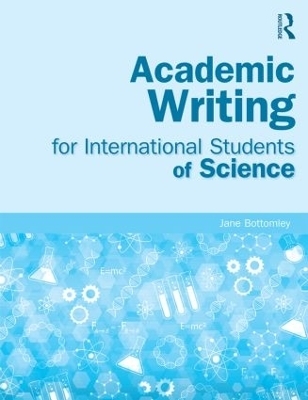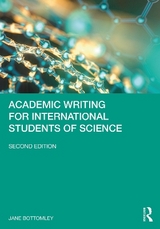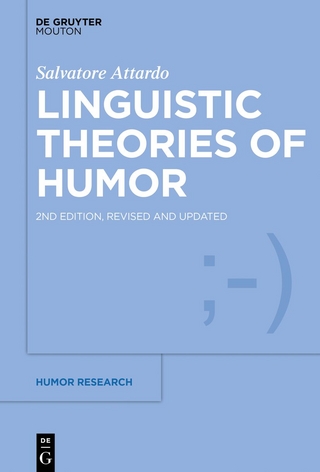
Academic Writing for International Students of Science
Routledge (Verlag)
978-0-415-83241-0 (ISBN)
- Titel erscheint in neuer Auflage
- Artikel merken
Through detailed analysis of authentic scientific texts, the book will enhance students’ understanding of the nature of academic scientific writing. This will enable them to understand how language and discourse function in a real scientific context. The texts serve as models of good writing and are followed by practice activities which will help students to develop their own writing skills.
Key topics include:
the writing process;
academic scientific style;
sentence structure;
paragraph development;
referring to sources;
coherence, argument and critical thinking;
academic and scientific conventions.
This book will be an invaluable companion to those studying for a science or technology degree in an English-speaking institution. Informative study boxes, model answers and a clear, comprehensive answer key mean that the book can be used for self-study or with guidance in the classroom.
Jane Bottomley is a Senior Language Tutor at the University of Manchester. She has worked as a writer and editor on a number of books, websites and dictionaries.
Chapter 1: Introduction Chapter 2: The Writing Process 2.1 Writing to Develop and Communicate Thinking 2.2 Reflecting on your Current Approach to Writing 2.2.1 Preparing to Write 2.2.2 Putting down Words on the Page 2.3 The Importance of Redrafting 2.4 Focus on Proofreading Chapter 3: Academic Scientific Style 3.1 Clarity 3.1.1 Sentence Length and Text Organisation 3.1.2 Being Concise 3.1.3 Being Precise 3.2 Language and Conventions 3.2.1 What is Academic Scientific Writing? 3.2.2 Common Features of Academic Scientific Texts Chapter 4: Sentence Structure 1 4.1 Subject + Verb Structures 4.2 Sentence Types 4.2.1 Forming Simple Sentences 4.2.2 Compound and Complex Sentences 4.2.2.1 Forming Compound Sentences 4.2.2.2 Forming Complex Sentences with Subordinating Conjunctions 4.2.3 Other Complex Sentences 4.2.3.1 Participle Clauses 4.2.3.2 Infinitive Clauses of Purpose 4.2.3.3 that-clauses 4.2.4 Focus on Relative Clauses Chapter 5: Sentence Structure 2 5.1 Combining Ideas 5.1.1 Prepositional Phrases 5.1.2 Sentence Connectors 5.1.3 Controlling Syntax 5 .2 Focus on Punctuation 5.3 Lists and Parallel Structures Chapter 6: Paragraph Development: Achieving Flow 6.1 Information Structure 6.1.2 Given versus New Information 6.1.2 General versus Specific Information 6.2 Cohesive Devices 6.3 Focus on Punctuation Chapter 7: Referring to Sources: Paraphrase, Referencing, Criticality and the Issue of Plagiarism 7.1 Using your own Words 7.1.1 The Issue of Plagiarism 7.1.2 Good Reasons to Use your Own words. 7.1.3 Good Reasons not to Use your Own words. 7.2 Adopting Good Academic Practice: Referencing and Criticality 7.3 Strategies for Paraphrase and Summary 7.4 Synthesising Information from Multiple Sources 7.5 Using your Reading to Build a Bank of Common Structures and Phrases Chapter 8: Textual Development: Structure, Coherence, Argument and Critical Thinking 8.1 Structure and Coherence 8.1.1 Focus on Introductions and Conclusions 8.1.2 Describing Methodology 8.1.3 Describing and Discussing Results 8.2 Maintaining Coherence 8.3 Building an Argument 8.3 Focus on Defining Terminology Chapter 9: Academic and Scientific Conventions 9.1 Referencing Conventions 9.2 Incorporating Quotation 9.3 Tables and Figures 9.4 Equations 9.5 Units of Measurement 9.6 Acronyms and Abbreviations 9.7 Bullet Point and Numbered Lists 9.8 UK versus US Spelling 9.9 Formatting and Presentation Appendix 1: Verb Forms and Patterns Appendix 2: Complex Noun Phrases Appendix 3: Common Areas of Difficulty in Grammar and Punctuation Appendix 4: Model Texts Answer Key Bibliography Sources of Authentic Texts Index
| Zusatzinfo | 37 Tables, black and white; 7 Illustrations, black and white |
|---|---|
| Verlagsort | London |
| Sprache | englisch |
| Maße | 189 x 246 mm |
| Gewicht | 385 g |
| Themenwelt | Schulbuch / Wörterbuch ► Wörterbuch / Fremdsprachen |
| Geisteswissenschaften ► Sprach- / Literaturwissenschaft ► Anglistik / Amerikanistik | |
| Geisteswissenschaften ► Sprach- / Literaturwissenschaft ► Literaturwissenschaft | |
| Geisteswissenschaften ► Sprach- / Literaturwissenschaft ► Sprachwissenschaft | |
| Sozialwissenschaften ► Pädagogik ► Erwachsenenbildung | |
| ISBN-10 | 0-415-83241-1 / 0415832411 |
| ISBN-13 | 978-0-415-83241-0 / 9780415832410 |
| Zustand | Neuware |
| Informationen gemäß Produktsicherheitsverordnung (GPSR) | |
| Haben Sie eine Frage zum Produkt? |
aus dem Bereich



